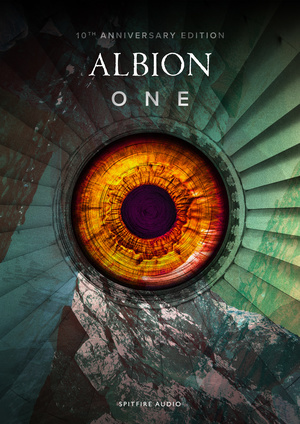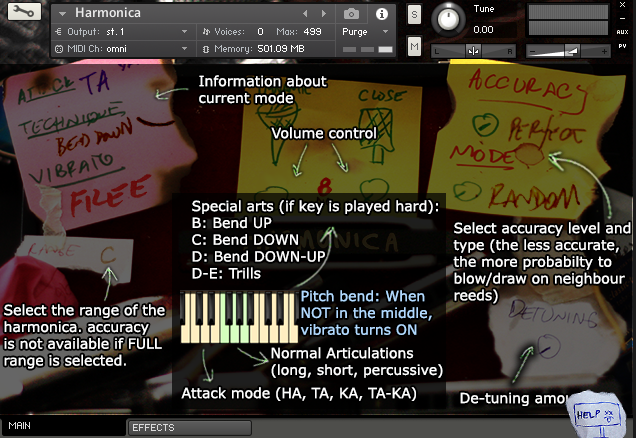Hello everyone! I’m continuing my promised onslaught of reviews with my most recent purchase, Native Instruments’ Symphony Series: Percussion!
Details
I am a big fan of Native Instruments, and when I bought Komplete 10 Ultimate a few years ago, I was a bit surprised by the lack of in depth orchestral samples. Granted, they had some amazing VSL patches included in the Kontakt Factory Library, plus two of my all time favorites, the epic percussion of Action Strikes and the outstanding riser and impact designer, Rise and Hit.
So of course, the following update, Komplete 11, contained exactly what was missing from 10, an all new collection of orchestral samples created in partnership with Native Instruments and various developers (Soundiron on Symphony Series Woodwinds and Brass, while Audiobro, creators of the acclaimed LASS, contributed to Strings)
Slightly different GUI’s for Symphony Series (left) and Essentials
Each new collection comes in two versions: Symphony Essentials, which is the version included in Komplete Ultimate collections, is a light version, only containing the basic articulations and not including as many features. Being the person I am, of course I had to strive for the upgraded and much larger Symphony Series, which includes everything in Essentials plus a lot more (the full, complete edition). For previous Komplete owners, the crossgrade price was $199.99 (regularly $299.99)
The most recent edition to the Symphony Series was created in partnership with Sonuscore, which immediately got me excited, as this is the same developer as the aforementioned Action Strikes.
Setup and the GUI
After downloading and installing via Native Access, I immediately started playing around with these new sounds. I was enticed by the fact they included a great variety of orchestral percussion instruments, so you got all the usual rhythmic instruments (cymbals, bass drums, snares, toms, gongs, triangle, etc) as well as tuned percussion (timpani, celeste, vibraphone, xylophone, low piano hits) and a nice variety of kits.
I LOVE the clean interface on display here.
The GUI for the Symphony Series in honestly one of my all time favorites. It’s clean, simple, intuitive, and there’s a lot of features and customization available. Being able to control the attack is something that is sometimes overlooked in sample libraries, and there are very deep microphone and mixing options, and everything is very clearly laid out, showing information regarding keyswitches, mapping, round robins, etc. The big knob in the center controls dynamics on tremolo articulations for the Timpani and Cymbals. All in all, the interface is flawless.
The Sound
Let me just state this up front, that this is NOT the percussion library you want to get in you’re looking to achieve a modern blockbuster/ “epic” sound. It is very traditional. Think John Williams or classics like Max Steiner as opposed to Hans Zimmer or Brian Tyler. For me, it is replacing Hollywood Percussion by East West/Quantum Leap, as I greatly prefer Kontakt over the Play engine.
I knew what to expect after listening to multiple audio demos, but was still very pleased just playing around with the new sample set. Also being an owner of Symphony Series Woodwinds, I knew that this was not going to be a dry library. This library is recorded wet, which may be an annoyance for some users. Enabling the close mics eliminates the natural reverb, however. The overall sound quality is great, some of my favorites being the powerful timpani hits and rolls, punchy snares, CC1 controllable cymbal swells, as well as the very useful kits, which include different instruments in each category mapped across the midi keyboard.
As for the different mallet instruments included (celeste, vibraphone, xylophone, glockenspiel), I was not a fan of the default stereo mix option for these. You get a LOT of the sound of the room, which may help for placing these instruments in a natural orchestral seating position, but for playing them by themselves. they sounded too distant to me. There was also an unnecessary amount of room noise in my opinion, which made some of the mic positions unusable, as you could almost hear more noise than the actual instrument itself. I preferred to isolate the close mics, or even the spot mics, in order to get the exact sound I wanted. It is not that much of a big deal to need to mess with mic positions, but just beware you may have to experiment and play around a bit with the mic positions to get a sound that is favorable to your ears, and that some of them feature A LOT of room noise which seems like a very strange decision.
The following video goes thru some of the sounds included in NI Symphony Series Percussion, and then compares them to some of the patches included in the Kontakt Factory Library.
All in all, this is a good orchestral percussion library, no doubt. Are there better ones on the market? I can almost guarantee it. However I don’t think their angle is to offer the most mind blowing and realistic samples ever heard. What the Symphony Series can offer is a wealth of content, perfectly usable in any project, for a VERY good price. 29 gb of content for $199 is a steal. I don’t really like the default mic positions but, that is really an easy fix. (KEEP IN MIND: The Symphony Essentials version of this library only offers ONE microphone position, and it is the one I don’t like, so please keep that in mind if you decide to purchase the smaller Symphony Essentials version) This library will also not do those massive walls of taiko drums or anything Hans Zimmer-esque, so for the epic/trailer composers that’s something to keep in mind. It is nonetheless worth every penny.




















